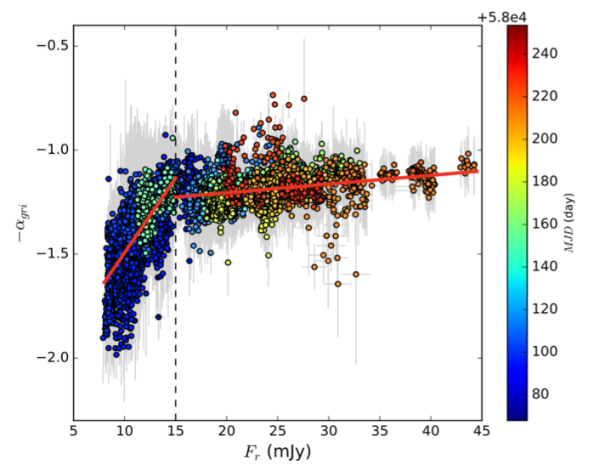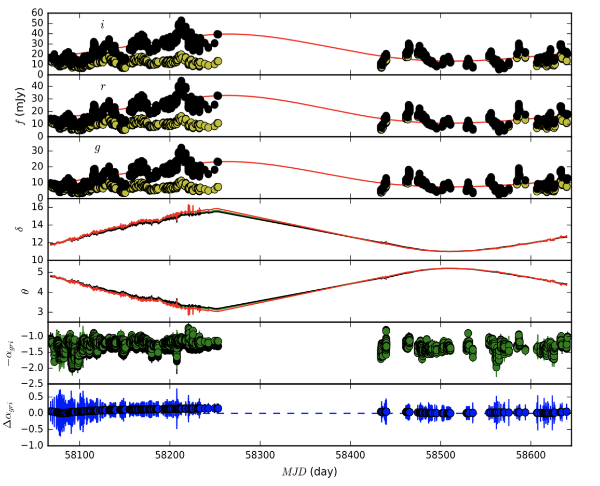Blazars are a special kind of rare active galactic nuclei. They are currently the most likely candidates for high-energy neutrinos. Their relativistic jets may be the origin area of super-high-energy cosmic rays and neutrinos. Flux variability is the most basic feature in blazars.
Using the 60cm fully automatic optical telescope jointly constructed by IAA-CSIC and Yunnan Observatories (BOOTES-4, the first professional-level program-controlled autonomous telescope in China), Dr. XIONG Dingrong from Lijiang Astronomical Observatory of Yunnan Observatories and other cooperators carried out long-term optical monitoring of the blazar S5 0716+714, which is a candidate of high energy neutrino and has very high energy radiation, and obtained the largest quasi-simultaneous multi-color photometry sample of this blazar.
For the long-term variations, a strong flatter when brighter (FWB) trend at a low flux state and then a weak FWB trend at a higher flux state are reported for the first time, which are well explained by the acceleration and cooling mechanisms of different electrons in the relativistic jet. A method was proposed to track the jet geometry on account of the invariant optical spectral index. Dr. XIONG and cooperators used this method to analyze the multi-color fluxes and spectral index variations, and found that the relativistic jet (or shock in jet) of the blazar traveled along a curved path, which supported inhomogeneous jet models (see figure below).
Referee comments that these observations and results are important for understanding the origins of relativistic jets and flux variability. The research results are published in The Astrophysical Journal Supplement Series on March 23rd.
These research findings are a progress of studying long-term flux variability in blazars. In recent years, using the Lijiang 2.4m optical telescope and the 1m optical telescope of Yunnan Observatories, ONG et al. have obtained the long-term optical monitoring results of two famous blazars 3C 273 and MRK 501. Long-term monitoring of optical bands can provide a large amount of observation data to study the origin of flux variability, provide early warning for the observation of high-energy and very high-energy gamma rays, and increase the probability of identifying blazar as a high-energy neutrino source.
Contact:
XIONG Dingrong
Yunnan Observatories of Chinese Academy of Sciences
xiongdingrong@ynao.ac.cn

The trends of long-term spectral index changing with brightness for the blazar S5 0716+714(image by XIONG Dingrong)

Changes of multi-color fluxes, jet geometry and spectral index(image by XIONG Dingrong)